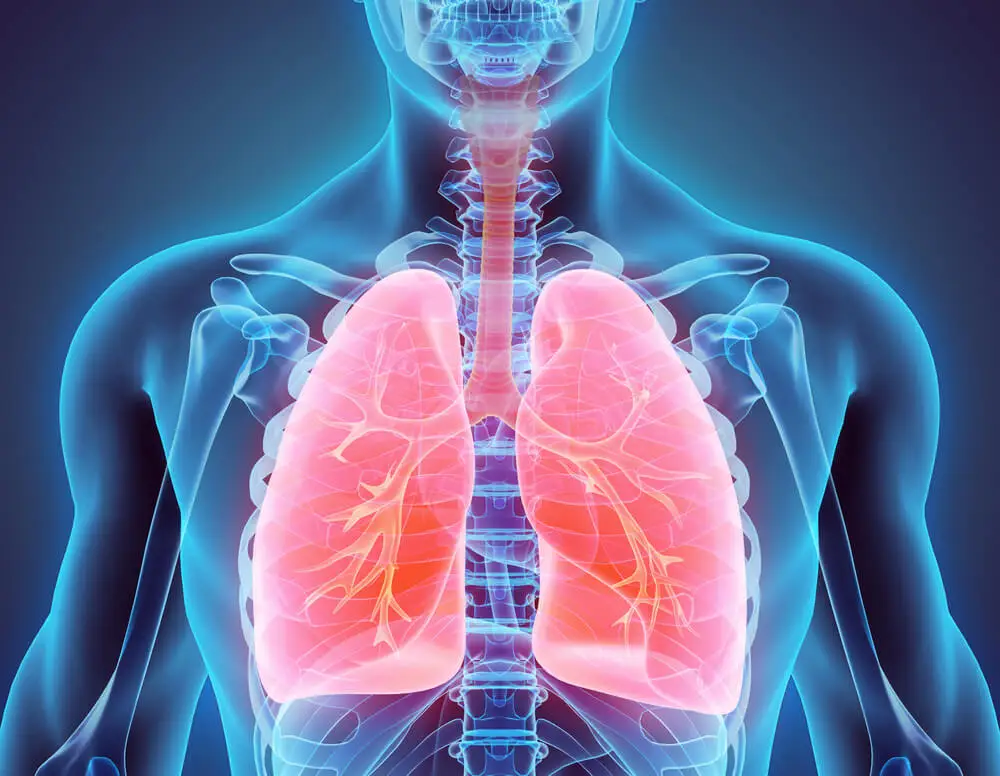The Valsalva Maneuver: A Technique that Can Help Prevent Injuries


Reviewed and approved by the doctor Leonardo Biolatto
Breathing is a fundamental aspect of all physical activity. It isn’t the same to breathe while resting or practicing a simple daily task as while performing an exercise. The Valsalva maneuver is a technique that helps to master the correct inhalation and exhalation for moments of bodily demand.
It’s very common that when teaching exercises such as squats or weight lifting, the movements are explained, but without mentioning breathing. However, mastering a breathing technique has advantages ranging from reducing the risk of injury to improving personal bests.
The Valsalva maneuver is a simple movement whose main difficulty lies in acquiring the habit through constant practice. Once incorporated, it has many benefits. Let’s take a closer look.
The importance of breathing while exercising and weight-lifting
In addition to understanding how to perform the movements of a routine, there’s another fundamental aspect of any form of exercise. This is the breathing technique – something that’s very important to improve performance, but also to prevent injuries.
Proper breathing allows greater effort and better timing of movements. On the other hand, it improves posture and avoids bad movements that lead to back pain, for example.
In gyms and when learning any physical activity, all the attention is usually focused on other aspects, such as the amount of weight, the equipment, the number of kilometers to be covered, or the number of repetitions. Although all of these are important, putting more emphasis on breathing can improve training results in a shorter period of time.
What is the Valsalva maneuver?
The Valsalva maneuver is a way of exhaling by making an effort to prevent air from escaping through the mouth or nose. That is, it involves holding your breath for a few seconds while performing the exercise. Mastering this maneuver allows you to develop a breathing technique that has multiple advantages for your physical condition.
It’s a common practice, although involuntary, in certain everyday situations, such as blowing your nose or straining your bowels. It may also be requested for certain medical examinations. For example, when a professional asks to exhale air using the muscles of the abdomen and diaphragm.
Although it isn’t a dangerous technique, it must be applied correctly, as it can cause an irregular heart rhythm. People with cardiovascular conditions should be especially careful with the maneuver.

We think you may also enjoy reading this article: Breathing and Attention: The Keys to a Good Yoga Pose
What happens during the Valsalva maneuver?
There are very common exercises in various routines that realize the importance of breathing. For example, squats.
After understanding the execution technique, it’s common to overlook how to breathe. This is also a fundamental action that can lead to physical damage to the back or other areas.
It’s generally suggested to inhale on the way down and exhale on the way up. However, the correct thing to do is to breathe very deeply. This produces what is known as intra-abdominal pressure, an application of forces generated by various muscles:
- Diaphragm: this is the main muscle used when breathing. It’s located below the lungs and maintains a constant contraction that expands the thoracic cavity.
- Oblique: lateral abdominal muscles. They are essential for rotational movements of the torso.
- Pelvic floor: a group of muscles and tissues that form a hammock across the pelvis. They contribute to the correct functioning of the bladder, bowel, and other organs.
- The rectus abdominis: the front part of the abdomen.
How to apply the Valsalva maneuver and the common results
The effect of the maneuver is a feeling of pressure inside the abdomen created by the action of inhaling. It helps to keep the spine more stable during exercise. Therefore, it’s important to generate this air support for the back by inhaling deeply and holding the torso when squatting.
Continuing with the example of squats, you should hold your breath on the way down, then increase the pressure on the way up. Once at the top, exhale while keeping your lips pursed. Inhale again and repeat the movement.
Correct functioning of the diaphragm
As the most important muscle in the breathing process, it’s important to know how the diaphragm works. During inhalation, it presses down against the abdominals.
Its purpose is to create more space to fill the lungs with air. Incorrect postures can affect the work of the diaphragm, which reduces the inhalation capacity.
Correct inhalation
This is to inflate the belly when inhaling, generating the sensation of a swollen belly. This isn’t really swelling, but demonstrates the correct functioning of the diaphragm.
Incorrect inhalation
On the contrary, when the chest and shoulders are lifted when breathing, it causes an incorrect posture. Known as vertical breathing, this movement fulfills the basic function of incorporating oxygen into the body but can lead to complications in other aspects.
Possible consequences of vertical breathing
An incorrect breathing technique sustained over time can lead to complications:
- Poor incorporation of oxygen: although vertical breathing fulfills the function of incorporating oxygen, it does so to a lesser extent. This results in a greater number of inhalations, which can have an effect on blood pressure and pulse.
- Neck pain resulting from the muscular tension generated in the shoulders during incorrect inhalation.
- Problems with the exercise: vertical breathing makes it impossible to apply the Valsalva maneuver. Therefore, the intra-abdominal pressure that functions as a support for the spine is not generated.
- Other organs: incorrect movements of the diaphragm can affect lower organs such as the liver, intestine, or spleen.

Like this article? You may also like to read: Relieve Back Pain with a Simple Breathing Technique
How to improve the Valsalva technique?
A basic exercise to introduce the Valsalva maneuver is to lie on your back and place a light but visible object over your navel. Then start breathing, trying to inflate the belly as much as possible. When exhaling, observe how the object descends.
It’s important to repeat the action several times so that it becomes a habit. In addition, it’s recommended to practice the technique a few minutes before training. In this way, it’s more likely that the Valsalva maneuver will be applied more frequently during the exercise. At the end of the routine, repeat the movement for a while longer to normalize the heart rate and promote relaxation.
Another simple exercise to improve breathing is to lie on your back, with your arms extended above your head and your knees drawn up towards your abdomen. Begin the inhalation by maintaining rigidity, while extending one leg, returning to the initial position, and then extending the other. Exhale slowly.
Precautions before performing the Valsalva maneuver
This movement can increase blood pressure, which becomes risky for people with hypertension. Therefore, this is a risk factor to be taken into account.
Pregnant women and those with cardiovascular problems are also at risk. In these cases, it’s recommended to avoid the maneuver or to make a medical consultation beforehand to evaluate whether it’s advisable or not.
Good breathing should be a daily habit
Once the Valsalva maneuver has been mastered, it’s possible to improve the breathing process during training and in everyday actions. After repeated practice of the technique, it can be applied in many routines.
It’s useful while doing squats, military presses, incline rowing, deadlifts, and anything that puts pressure on the spine. Then, the action of breathing involving the abdominals and stiffening the muscles becomes a habit.
All cited sources were thoroughly reviewed by our team to ensure their quality, reliability, currency, and validity. The bibliography of this article was considered reliable and of academic or scientific accuracy.
- Trejo Nava Carlos Alberto. La maniobra de Valsalva: Una herramienta para la clínica. Rev. Mex. Cardiol [revista en la Internet]. 2013 Mar [citado 2022 Feb 28] ; 24( 1 ): 35-40. Disponible en: http://www.scielo.org.mx/scielo.php?script=sci_arttext&pid=S0188-21982013000100004&lng=es
- Revisión Sobre La Prueba de Hiperventilación y La de Valsalva.” Revista ORL 9.2 (2018): 133–137. Disponible en: https://rca.usal.es/index.php/2444-7986/article/view/orl.17385/0
- Deniel Fakouri, Mohammad Hosein Taziki Balajelini, Seyed Mehran Hosseini. El efecto de las maniobras de Valsalva y Jendrassik sobre el reflejo acústico. Golestan University of Medical sciences, Student Research Committee, International Campus, School of Medicine. Vol. 5 Núm. 12: (Diciembre 2020) JONNPR 2020;5(12):1464-1729. Disponible en: https://doi.org/10.19230/jonnpr.3953
- Rodríguez Morrill, Evelyn I., Pérez Ruvalcaba, Sara Lidia, El cambio de cuerpo estresado a cuerpo relajado, a través de la respiración, la visualización y la danza en un ambiente de protección acompañada. Educación Física y Ciencia [Internet]. 2009;11:81-91. Recuperado de: https://www.redalyc.org/articulo.oa?id=439942653007
- Rodríguez Rodríguez, Teresa, García Rodríguez, Clara Marta, Cruz Pérez, Ramón, Técnicas de relajación y autocontrol emocional.. MediSur [Internet]. 2005;3(3):55-70. Recuperado de: https://www.redalyc.org/articulo.oa?id=180019787003
This text is provided for informational purposes only and does not replace consultation with a professional. If in doubt, consult your specialist.








